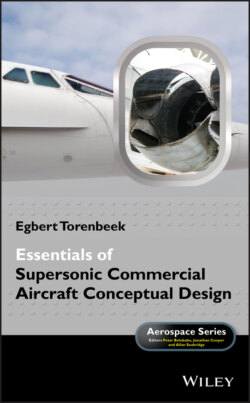Читать книгу Essentials of Supersonic Commercial Aircraft Conceptual Design - Egbert Torenbeek - Страница 16
1.6 A Market for a Supersonic Commercial Aircraft?
ОглавлениеFigure 1.6 Single spool MTF in operating mode for take‐off (top) and cruise (bottom).
Ever since jet‐powered airliners made their introduction into service during the 1950s, passengers on medium to long range routes have been transported at cruising speeds up to 900 km h−1 (Mach 0.85) in the stratosphere. Military aircraft have been able to pass the so‐called “sound barrier” in routine flights since about 1960. A few exceptional types achieved continuous speeds higher than Mach 3 at altitudes above 20 km. It is therefore not surprising that after 1975 the development of a second generation supersonic airliner became a challenge to the aeronautical community. Since then, a huge amount of money has been spent on R&D programs aimed at developing advanced technology for a new generation of HSCT aircraft. Arguably it is stunning that, despite 27 years of Concorde's satisfactory passenger service and so many technological advancements applied in all sectors of civil aviation, none of these programs have resulted in a viable development project for the near future aimed at producing an advanced supersonic commercial aircraft.
